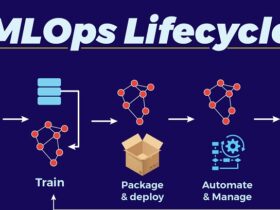Medicare’s structure generally remains the same from year to year. However, details such as premiums, deductibles, and plan options tend to change each year. That’s why planning for Medicare should be at the top of your New Year’s Resolution list.
Here’s what you can expect from Medicare in 2021.
Original Medicare premiums
Most Medicare beneficiaries qualify for premium-free Part A through their own work history or a spouse’s. However, everyone except those eligible for Medicaid must pay at least the standard monthly Part B premium. In 2020, the Part B premium was $144.60 per month. As of 2021, that premium is increasing to $148.50 per month.
Although that’s a $4 increase, the premium was expected to increase by nearly $9, according to the Centers for Medicare and Medicaid Services (CMS). The increase was lowered after CMS reanalyzed the impact of the COVID-19 pandemic.
Although most people pay nothing for Part A at 65 years old, those who don’t qualify for premium-free Part A must pay a monthly premium for Part A like they do for Part B. Depending on how many work quarters you have under your belt, you may pay $471 or $259 per month for Part A. These premiums also experienced a lower increase than initially estimated.
Original Medicare deductibles and other cost-sharing
In addition to monthly premiums, you are also responsible for deductibles as you access your Original Medicare benefits. The Part A deductible is paid per benefit period, which can happen multiple times in one year, while the Part B deductible is paid annually.
The Part A deductible is $1,484 in 2021, a $76 increase from the 2020 deductible. The Part B deductible was expected to increase from $198 to $212 but was set at $203 for 2021. Again, this was due to the impact of the pandemic.
Other Original Medicare cost-sharing expenses may also change from year to year. However, your Part B coinsurance shouldn’t change; Part B coinsurance is 20%. Medicare Part A has daily copays for inpatient stays lasting longer than 60 days. For days 61 through 90, the daily copay increased by $19, making it $371, and the daily copay for days 91 and beyond increased by $38, bringing it to $742.
Medicare plan options
While these costs might be startling at first, you’ll be happy to know that you can enroll in a Medicare plan to potentially lower your out-of-pocket burden. In 2021, you can enroll in either a Medigap or Medicare Advantage plan once you’ve enrolled in both Part A and Part B. The type of plan you choose will determine your out-of-pocket costs.
For example, if you choose a comprehensive Medigap plan like Plan G,. your plan will cover all of your Original Medicare cost-sharing expenses except for the Part B deductible.
On the other hand, if you choose a Medicare Advantage plan, your cost-sharing will completely change. The insurance company provides your Part A and Part B benefits and determines your cost-sharing. Medicare Advantage plans are required to cover you as well as Original Medicare and often lower your out-of-pocket costs. Most also provide additional benefits not available with Original Medicare. You’re also protected by a maximum out-of-pocket limit.
Premiums for these plans vary. Medigap plan premiums vary by zip code, age, gender, carrier, tobacco-use, and more. Medicare Advantage plan premiums vary by plan, although most people have access to a $0 premium plan.
The 2021 Medicare Part D Senior Savings Model
Potentially the most exciting Medicare news for 2021 is the Part D Senior Savings Model launch. This program was designed to lower insulin copays for insulin-dependent Medicare beneficiaries. If you have a Model Part D plan for 2021, a month’s worth of your covered insulin will cost no more than $35. According to CMS, the average Medicare beneficiary will save nearly $500 a year with a Model Part D plan.
If 2021 will be your first year on Medicare, be sure to plan for these out-of-pocket expenses, and research your plan options well in advance to have a smooth transition when your Initial Enrollment Period arrives.








